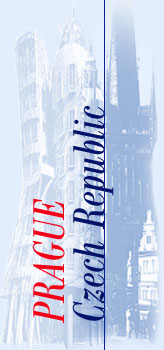SOUTH BOHEMIA
ČESKÉ BUDĚJOVICE (pop. 100,000) is the centre of South Bohemia, a very attractive tourist region characterized by numerous fishponds, rich in artistic and historical monuments. The town, founded in 1265, is famous for Budweiser beer, which is produced by the Budvar Brewery, established in 1894. In 1832, the first railway in Europe began operations between České Budějovice and Linz in Austria. Some of the old railway stations are still preserved. The main square with arcades is the biggest square in the Czech Republic. It is lined with Gothic, Renaissance and Baroque houses. A tower, designed in Gothic and Renaissance styles, dominates the town. The typical ale-house Masné krámy is also worth visiting. The town also offers an annual music festival, as well as agricultural exhibitions.
HLUBOKÁ NAD VLTAVOU (pop. 4,300) is a town north of České Budějovice with a chateau that belongs to the most picturesque and most visited Czech landmarks. It is located on the site of a former royal castle reconstructed on several occasions, and overlooks the river Vltava. Between 1841 and 1871, it was remodelled in the neo-Gothic style, inspired by Windsor Castle. Its 140 rooms house rich collections of Flemish tapestries dating back to the 17th century, as well as weapons, portraits, period furniture, glass and china. The former riding school has been adapted as the Alšova South Bohemian Gallery, containing valuable collections of Gothic and modern art. The chateau is surrounded by a romantic park with many rare trees.
ČESKÝ KRUMLOV (pop. 14,600) is one of the most magnificent historic towns in the country. The centre of Český Krumlov has preserved its authentic medieval character and has been given the status of an urban reserve protected by UNESCO. The dominant feature is the castle, founded in the 13th century, and later rebuilt in Renaissance and Baroque styles. It is a vast compound of buildings, including the 18th-century summer pavilion Bellaria and a riding school. The rooms are beautifully furnished and contain some valuable paintings. Later, an open-air theatre with a unique revolving auditorium was added. Surrounding the castle, the town is beautifully situated on a headland formed by meanders of the river Vltava (the Moldau). The great majority of the town houses are fine examples of Gothic architecture, later rebuilt in Renaissance and Baroque styles. The town has an unbelievable 250 protected structures, including the Renaissance Town Hall, a convent, a monastery and several churches. A walk through the picturesque streets and squares is an experience to be treasured.
TŘEBOŇ (pop. 6,000) is another jewel of a town of South Bohemia. Třeboň was settled in the 13th century by the Wittkowitzes (later called Rosenbergs), once Bohemia's noblest family. Thanks to them, this unlikely landlocked town has become the centre of the Czech Republic's fishing industry. In the 15th and 16th centuries, the Rosenbergs peppered the countryside with 6,000 enormous ponds, partly to drain the land and partly to breed fish (mostly carp). Pond Svět is the closest one to the town. The sgraffito Renaissance exterior of the castle is highly impressive. The intact town walls, built in the 16th century, are some of the best in the Czech Republic. An 18th-century brewery, still producing outstanding beer, remembers that beer has been brewed since 1379 here. The main square is famous with its collection of well-preserved Renaissance and Baroque houses. Next to the square is the Třeboň Castle and nearby the Augustine monastery the famous Altar of the Masters of Wittingau, dating from the late-14th century.
JINDŘICHU V HRADEC (population 21,800) was in the Middle Ages one of Bohemia s most important towns. Its old town and castle, situated between the Nežárka river and Vajgar Lake, with the Renaissance castle with rich interior collections on the lakeside, are attractive and unique. The town, prospering from its position on a trade route from Austria, and from nearby silver mines, suffered three great fires in 1435, 1773 and 1801, the result was broad spectrum of architecture from the 15th to the 19th centuries.
ŠUMAVA, or the Šumava Mountains, is the largest mountain range in the Czech Republic and the largest woodland area in Central Europe. It is situated in Southwest Bohemia, along the border with Germany and Austria. It is very popular due to its beautiful natural scenery and cultural landmarks. The Šumava National Park is connected with the Bavarian National Park in Germany. It forms an enclave in Central Europe which has been hardly touched by man. The longest Czech river, the Vltava (the Moldau), has its source here. The highest peak of the Šumava Mountains on Czech territory is Plechý (1,378 m), situated near the border, not far from the Lipno Lake. The Boubín mountain (1,362) is famous for its primeval forest. There are five lakes in the area. They were all created by glacial activity. The largest among them is the 18-hectare Černé jezero (Black Lake) which is 39 metres deep. The mountains offer excellent conditions for cross-country and downhill skiing, as well as for relaxing walks in the forest. |

